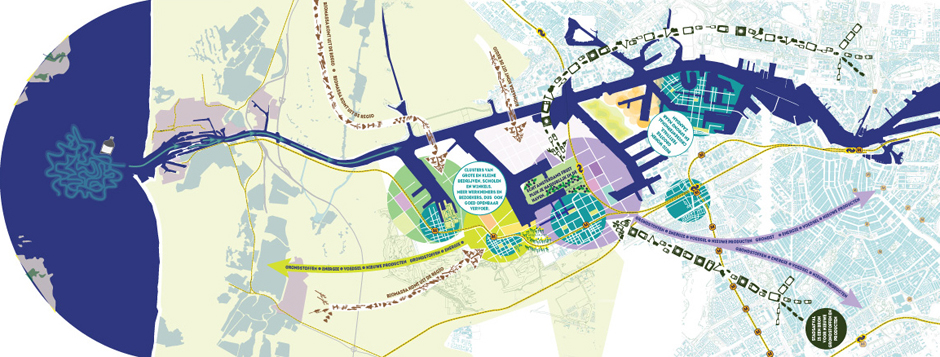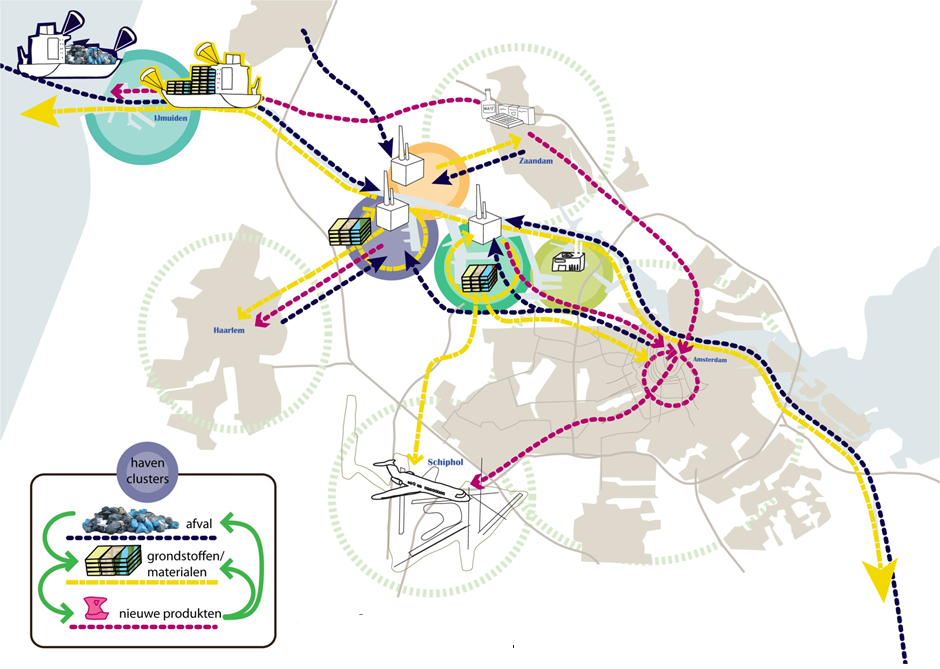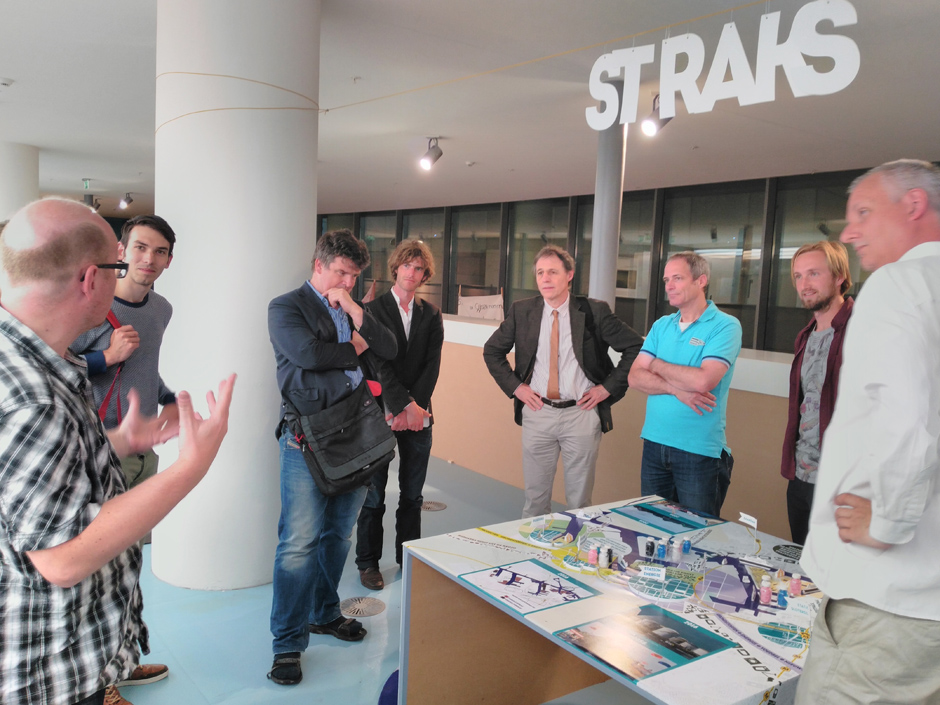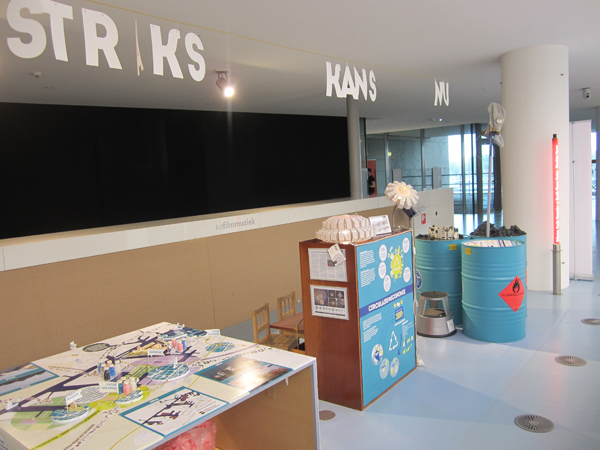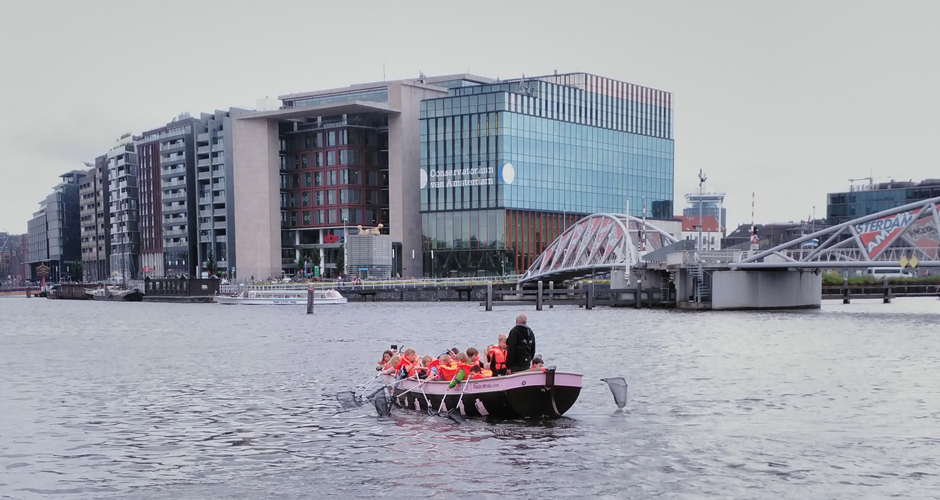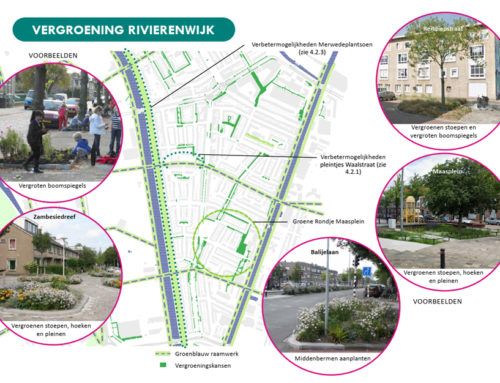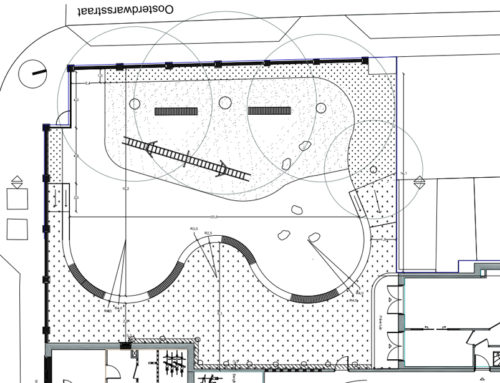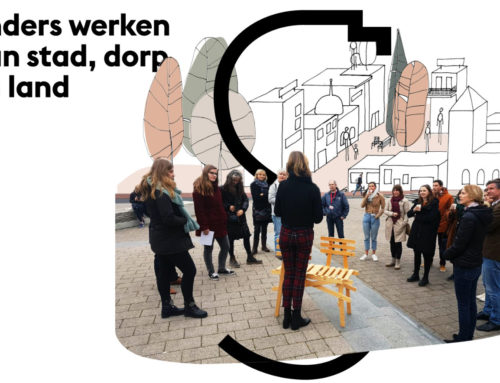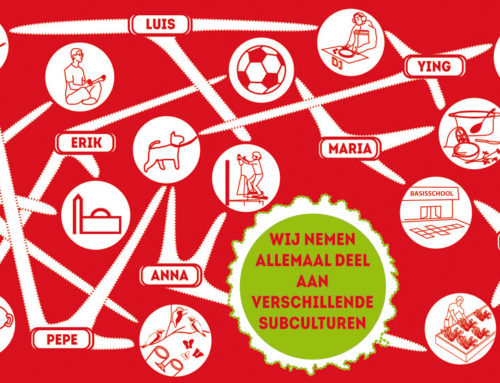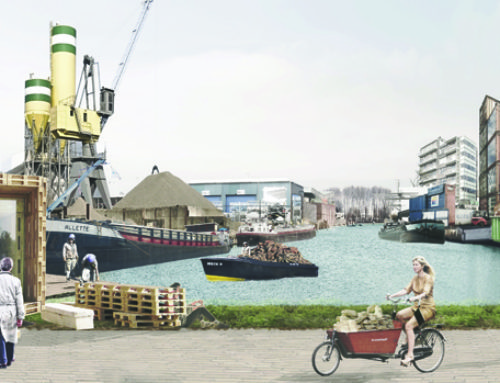Project Description

Volksvlijt2016 is een platform voor de open stad van de toekomst.
Een jaar lang is door ontwerpers, bedrijven, kennisinstellingen en bewoners van Amsterdam gewerkt aan twaalf campussen in de metropoolregio Amsterdam. Een campus is een plek waar mensen wonen, werken, leren, innoveren en recreëren. Elk van de campussen heeft een eigen karakteristiek, denk aan de Food Campus Zaanstad en de Health & Wellbeing Campus Amsterdam Zuidoost. Maar alle campussen grijpen ook in elkaar. Samen vormen ze een sterke en duurzame Metropoolregio.
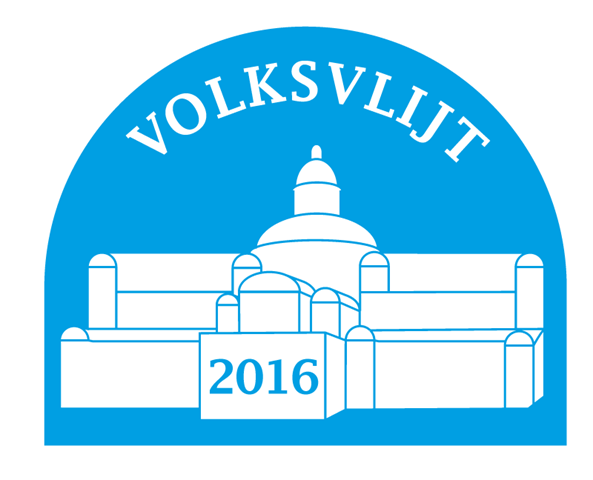
Het resultaat is tentoongesteld in Amsterdam in 2016, tijdens het Nederlands voorzitterschap van de Europese Unie.
Volksvlijt2016 is een open platform, inspirerend en interactief. Iedereen kan bijdragen. In 2015 en 2016 zijn drie open ateliers georganiseerd waarin een dag lang gezamenlijk wordt gewerkt aan de verschillende campussen. In april was het eerste atelier en in september en december de volgenden. Tijdens het EU jaar was de tentoonstelling in de Openbare Bibliotheek. Daarbij een uitgebreid programma aan lezingen, debatten, workshops, kinderactiviteiten en rondleidingen.
Volksvlijt is een gezamenlijke zoektocht naar een nieuwe economie en een nieuwe cultuur van maken.
Een initiatief van de Wibautleerstoel aan de Universiteit van Amsterdam, in samenwerking met Amsterdam Institute for Advanced Metropolitan Solutions en Amsterdam Economic Board.
Wij hebben gewerkt aan de circulaire haven van Amsterdam.
Onderstaand een korte introductie op het thema:
De pompen staan wereldwijd te loeien en gas, kolen en olie worden met steeds meer moeite uit onze aarde gewonnen. Op een gegeven moment zijn deze fossiele brandstoffen allemaal op en wat dan? Daarnaast leidt het gebruik van die fossiele brandstoffen tot de vervuiling onze lucht en milieu. Zijn er andere mogelijkheden?
Natuurlijk! Een kans is de circulaire economie waarbij producten gemaakt worden van gezonde materialen. Deze producten worden na gebruik niet weggegooid, maar vormen een nieuwe grondstof voor een ander product en zo is de cirkel weer rond. Het is schoon en oneindig. De Amsterdamse haven is nu nog erg afhankelijk van de fossiele brandstoffen. Wist je dat onze haven de grootste benzinehaven van de wereld is? Of de tweede kolenhaven van Europa? Als we circulair gaan leven en dus geen kolen en benzine meer gebruiken vormt dit een probleem voor onze haven. Ze is dan genoodzaakt te veranderen en ruimte te bieden aan circulaire bedrijven. Dat is meteen een kans om de haven weer bij Amsterdam te betrekken en Amsterdammers trots te laten zijn op hun haven, de 4de haven van Europa, groot werkgever in Amsterdam en één van onze poorten tot de wereld. De haven moet hiervoor haar huidige infrastructuur benutten om nog meer waarde toe te voegen aan de stad.

In de tentoonstelling hebben we een aantal thema’s proberen aangekaart.
1. bewustwording. De Amsterdamse haven draait op fossiele brandstoffen, bijna 80% van de overslag is fossiel en dus eindig en niet duurzaam. We hebben dit uitgebeeld met olievaten, een besmeurd Amsterdam en kolenbergen.
2. de kans. Nog niet veel mensen weten wat de circulaire economie is en zeker niet wat een circulaire haven zou kunnen zijn. We hebben de principes van de circulaire economie uitgelegd, circulaire producten tentoongesteld van Interiorica en een knutseltafel gemaakt om van afval nieuwe producten te maken. Alles moest begrijpelijk zijn voor kinderen, dus we hebben alles zo eenvoudig mogelijk proberen uit te leggen en eigenlijk begrijpen kinderen heel goed dat alles weggooien zonde is en slecht voor het milieu.
3. De toekomst van de haven. Voor de circulaire economie zijn door adviesbureaus zoals McKinsey een aantal business models en principes opgesteld die wij hebben toegepast op de haven. De haven is naar onze mening een schakel in verschillende economische ketens en de haven moet nu een schakel gaan vormen in een nieuwe circulaire economie. Nu is de haven een schakel in de kolendoorvoer, straks een schakel in de energievoorziening van Amsterdam en de recycling van afval dat wereldwijd wordt verzameld. Door de haven beter bereikbaar te maken, andere schalen toe te voegen en meer functies te mixen ontstaat een nieuwe invulling van de haven. Het resultaat was uitgebeeld in een grote maquette.
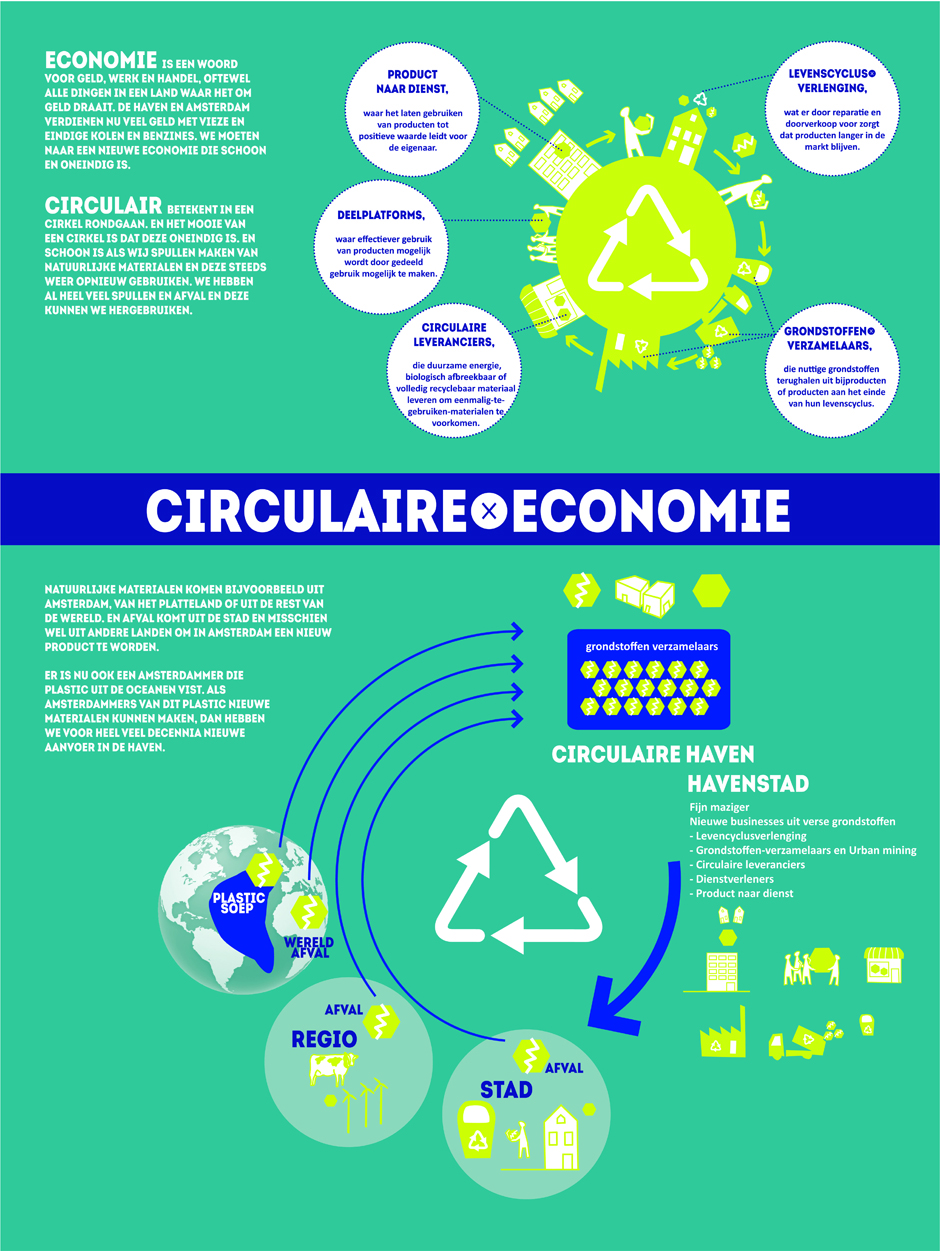
Side events
Er zijn verschillende lezingen, debatten, workshops en excursies georganiseerd om de boodschap te bespreken en over te dragen. Het eerste debat was met het Havenbedrijf Amsterdam, Waternet, gemeente Amsterdam en de Economic Board. Het tweede debat was samen met FossielVrij Amsterdam georganiseerd en draaite om de vraag hoe de transite naar een fossielvrije haven kan plaatsvinden. Voor kinderen waren er workshops en konden ze gaan plastic vissen in de Amsterdamse grachten met de Plastic Whale. Ica van Tongeren van R4mers heeft bijvoorbeeld een workshop gegeven aan basisschoolkinderen hoe van afval weer nieuwe producten gemaakt kunnen worden. We hebben ook een ontbijt georganiseerd in samenwerking met Wij krijgen Kippen en Fossielvrij Amsterdam om nog meer ideeën op te halen.
Er zijn naar aanleiding van ons project verschillende artikelen verschenen, bijvoorbeeld in het Parool (klik hier) en het Zeehavens Amsterdam magazine heeft een speciaal nummer gewijd aan de circulaire haven met alle sprekers van de debatavond die georganiseerd door ons was.
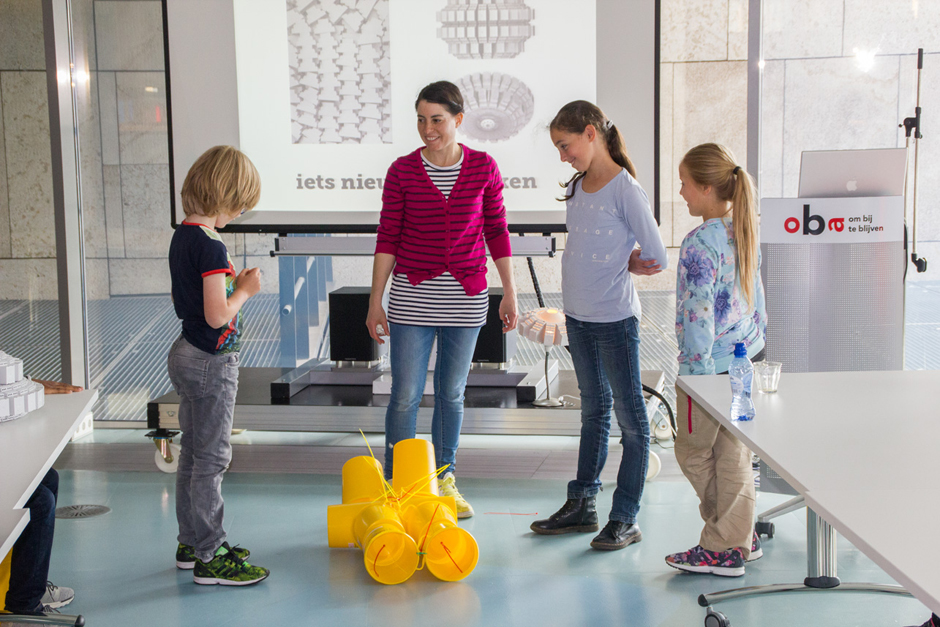
Foto gemaakt door Ray Edgar van Re4mers.
In november 2017 is een boek verschenen over de tentoonstelling. Het boek “Dream Your Own Future” geeft een beeld van het proces en alle projecten. Pepijn Verpaalen van URBANOS heeft het boek samen met Marieke Berkers, Zef Hemel en Mirjana Milanovic geschreven en Thonik was verantwoordelijk voor het ontwerp.


